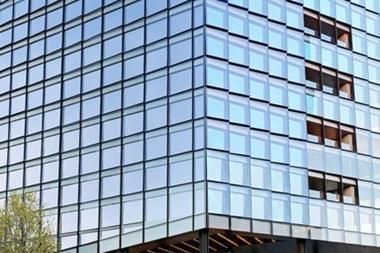The future of flexible office space is bright, but a ‘turf war’ and major changes to the sector have many implications for providers and developers.

Flexible working was already a thing before Covid, but it took on a new meaning during the pandemic. With restrictions easing, hybrid models have become mainstream, and existing trends towards flexibility have also been accelerated, bringing with them a momentous shift in attitudes in terms of how and where we work. As the dust settles, where does this leave the flex sector?
Pre- and post-pandemic research into the sector by AFK with Worktech found evidence that its market share would more than double from its current 5% to 12.5% in just two years. It could even rise as high as 20% given the ‘right’ conditions – according to the industry experts we spoke to.
Interestingly, large corporate clients in professional services, life sciences, banking and finance and tech will be behind this growth spurt, seeking flexibility in their real estate strategies. By utilising on-demand plug-and-play flex spaces, these businesses can experiment with different models – such as hub-and-spoke, where a destination HQ is supplemented by satellite offices – as separate bases to foster collaboration between teams or as a way to offer more work settings to attract talent and offer more choice.
Interest upswing
This upswing in corporate interest may be accompanied by a downturn in smaller tenants such as freelancers and small start-ups. Initially, this may stem from a desire to save costs and capitalise on the relaxation of attitudes regarding home working, but a much increased presence of corporate occupiers could reduce the space available for smaller tenants.
Although corporate migration towards flex space was already happening to some extent, the intelligence gathered during our research seems to indicate a definite shift, with flex operators reporting they now intend to sell around 80% of their space to corporate occupiers. This potential boom in corporate occupation of flex will almost certainly sow the seeds of a ‘turf war’ between flex operators and traditional landlords.

This shift in tenant types for flex may be lucrative, but it has profound implications besides igniting competition. For one, flex office operators will be forced to revamp, upgrade or even super-size their spaces to match those of traditional landlords in order to attract and accommodate more and more corporate occupiers.
Changing demands also need to be catered for. Most tenants want better and bigger amenities, services and locations, together with wellbeing, hygiene and air quality, as well as the ability to stage-manage densities and space to facilitate collaboration and a range of different work settings.
The overarching conclusion from our research is that flex spaces will become less of a ‘type’ of space and more of a ‘strategic instrument’ of property. With an eye on sustainability, for example, property owners sitting on under-utilised or neglected space, vacant retail units and buildings with previous other uses can take advantage of flex to retrofit or repurpose them.
The new post-pandemic world advances the debate beyond just how much space a business really needs and how space can be best used. The purpose of the office has changed irrevocably and will become much more centred on community, collaboration and culture.
Covid has disrupted the office landscape and challenged our notions of ‘work’ and the workplace.
It is less a case of whether ‘flex’ has a future, more to what extent ‘flex’ will dictate the future.
Earle Arney is chief executive of Arney Fender Katsalidis (AFK)




























No comments yet